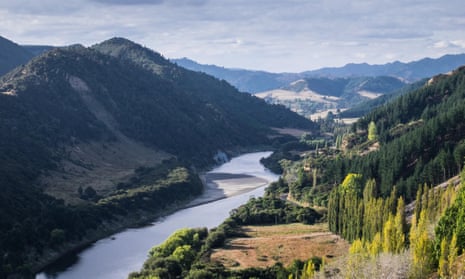Several geographically-distant but related events signalled a dramatic mind shift in humanity’s troubled relationship with nature last month. First, the New Zealand parliament passed the Te Awa Tupua Act, giving the Whanganui River and ecosystem a legal standing in its own right, guaranteeing its “health and well-being”.
Shortly after, a court in India ruled that the Ganges and Yamuna rivers and their related ecosystems have “the status of a legal person, with all corresponding rights, duties and liabilities ... in order to preserve and conserve them”.
The history of the rivers makes these proclamations remarkable. The Ganges has long been considered sacred and millions of people depend on it for sustenance, yet it has been polluted, mined, diverted and degraded to a shocking extent. The Whanganui has witnessed a century-old struggle between the indigenous Iwi people and the New Zealand government over its treatment. Notably, the Iwi consider themselves and the Whanganui as an indivisible whole, expressed in the common saying: “I am the river, and the river is me.”
Rivers are the arteries of the earth, and lifelines for humanity and millions of other animals and plants. It’s no wonder they have been venerated, considered as ancestors or mothers, and held up as sacred symbols. But we have also desecrated them in every conceivable way. Can giving them the legal rights of a human help resolve this awful contradiction?
Perhaps, if we are able to think beyond the material limits of how we relate to nature, we can encourage political and economic measures to create a deeper and more ethical relationship. New Zealand and India have recognised the intrinsic rights of rivers, beyond their use for humans. Both recognise rivers as having spiritual, physical and metaphysical characteristics. These crucial extensions of law are based on ethical principles rarely recognised since the industrial age, but this is how indigenous peoples have long treated nature.
What does it mean for a river to have the rights of a person? If the most fundamental human right is the right to life, does it mean the river should be able to flow free, unfettered by obstructions such as dams? Does the right extend to all creatures in the river system? How can a river, with no voice of its own, ensure such rights are upheld or ask for compensation if they are violated? Who would receive any compensation? And can such rights undo past wrongs?

The New Zealand law recognises that past activities, including a hydroelectricity project, caused damage. The implication is that any such future activities could violate the river’s rights. The Indian court’s orders are vague on some of these aspects, but with a number of hydroelectricity projects being built or planned for the upper reaches of the Ganges and the Yamuna, a clearer articulation of what the court’s orders mean is urgently needed.
And while New Zealand entrusts custodianship of the river to the Iwi people and the government, India puts its faith mostly in government officials and legal experts. This appears shortsighted, given that the country has so far failed to maintain the health of the Ganges and the Yamuna. How will its officials be responsible “parents” – as designated by the court – if their superiors continue to make decisions that are detrimental to the rivers, such as massive hydro-project construction? Can these officials sue their own government?
Another issue is the Indian court’s equation of the Ganges with Hinduism. Hindus do venerate this river, but communities of other religions have lived along it for centuries. In an atmosphere of increasing religious divisiveness in India, these court orders must not be hijacked by forces of intolerance.
The decisions in New Zealand and India come amid a growing global movement towards recognising the rights of nature. Since 2006, dozens of communities in the United States have enacted the world’s first laws recognising such rights. In 2008, Ecuador became the first country to secure the rights of nature – Pachamama – in its constitution, Bolivia enacted the Law of Mother Earth three years later, and in 2009, the United Nations General Assembly proclaimed 22 April as International Mother Earth Day.
Though the Ecuadorian government has been slow to implement nature’s rights, the country’s courts have issued several decisions upholding them. In a case brought in the name of the Vilcabamba River in 2011, the provincial court of Loja ruled that the rights of the river had been violated by government road construction, and ordered the restoration of the affected river corridor.
Crucially, in the US and Ecuador, people and governments can “step into the shoes” of nature; when people witness the failure of a government to uphold nature’s rights, they can bring cases on its behalf.
At a time of accelerating species extinction, ecosystem collapse, and climate change, this movement marks a transformation in humankind’s relationship with the natural world. Recognising such rights does not stop all human use of nature, but means that our actions must not interfere with the ability of ecosystems and species to thrive. Eventually, respect for nature should be built into how we live, and not because a law is telling us to do so.
Mari Margil is the associate director of the Community Environmental Legal Defense Fund. Ashish Kothari and Shrishtee Bajpai are members of the Kalpavriksh Environmental Action Group. Follow @CELDF and @chikikothari on Twitter.
Join our community of development professionals and humanitarians. Follow @GuardianGDP on Twitter, and have your say on issues around water in development using #H2Oideas.
